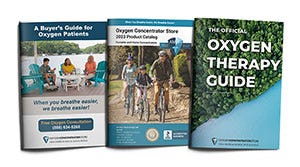Pleural Disorders: Symptoms, Causes and Treatment
Shortness of breath and pain are common symptoms of pleural disorders. The pleural membranes encase the lungs’ exterior and line the inside of the chest cavity. When there is a buildup of fluid, blood, or gas between the layers, there is a risk of lung collapse. Treating pleural disorders requires removing the substance between the pleural layers and treating the underlying cause of the pleural disorder.
Pleural disorders are marked by shortness of breath and discomfort or pain. However, there are several varieties of pleural disorders, with various causes and specific treatments.
The pleura are vital to the body’s respiratory and heart health. There are two layers of pleura, which is a large, thin tissue membrane encasing the outside of the lungs and lining the inside of the chest cavity. Typically, a small amount of fluid rests between the two pleural layers to help them glide smoothly past each other with each respiration. However, when pleural problems develop, the amount of fluid may increase markedly.
Pleural disorders sometimes result from viruses, while others are due to chronic conditions such as COPD or congestive heart failure. Still others stem from injuries. Diagnosing pleural disorders often includes chest x-rays, a chest CT, an ultrasound of the chest, or MRI. Blood tests also help in diagnosing the problem. In some cases, a biopsy is necessary. The treatment for all involves removing the built up substance from the pleural space, providing pain relief, and treating the underlying causes of the condition.
Additionally, treatment of any underlying conditions is required. During any fluid removal procedure, a sample of the substance is tested so that the correct medications are used to treat the cause of the pleural disorder, from antibiotics for a bacterial infection, to diuretics for cases involving heart failure.
The information on this page is not intended to be a substitute for professional medical advice, diagnosis, or treatment. For more information about pleural disorders, talk to your doctor or primary care provider.
Pleural disorders are marked by shortness of breath and discomfort or pain. However, there are several varieties of pleural disorders, with various causes and specific treatments.
The pleura are vital to the body’s respiratory and heart health. There are two layers of pleura, which is a large, thin tissue membrane encasing the outside of the lungs and lining the inside of the chest cavity. Typically, a small amount of fluid rests between the two pleural layers to help them glide smoothly past each other with each respiration. However, when pleural problems develop, the amount of fluid may increase markedly.
Pleural disorders sometimes result from viruses, while others are due to chronic conditions such as COPD or congestive heart failure. Still others stem from injuries. Diagnosing pleural disorders often includes chest x-rays, a chest CT, an ultrasound of the chest, or MRI. Blood tests also help in diagnosing the problem. In some cases, a biopsy is necessary. The treatment for all involves removing the built up substance from the pleural space, providing pain relief, and treating the underlying causes of the condition.
- Pleurisy is an inflammation of the pleura. Pleurisy causes a sharp, stabbing pain when breathing, and increases with deeper breaths. It is usually caused by a viral infection. Other symptoms of pleurisy are shortness of breath, coughing, fever, and weight loss.
- Pleural effusion occurs when there is a buildup of excess fluid in the area between the two pleural membranes. In many cases, the cause of pleural effusion is congestive heart failure. Although people with the condition may have shortness of breath, there are often no symptoms at all.
- Pneumothorax occurs in individuals with lung diseases such as tuberculosis and chronic obstructive pulmonary disease, or COPD. It refers to the accumulation of air or gas in the pleural space, and may appear in cases of acute lung injury. Some symptoms involve breathing, such as shortness of breath, tightness in the chest, and bluish skin tint. Additionally, many experience rapid heart rates, fatigue, and low blood pressure.
- A hemothorax refers to a buildup of blood in the pleural space, and usually presents in cases involving chest injuries. Its symptoms include chest pain, shortness of breath, respiratory failure, anxiety, and a rapid heart rate.
Additionally, treatment of any underlying conditions is required. During any fluid removal procedure, a sample of the substance is tested so that the correct medications are used to treat the cause of the pleural disorder, from antibiotics for a bacterial infection, to diuretics for cases involving heart failure.
The information on this page is not intended to be a substitute for professional medical advice, diagnosis, or treatment. For more information about pleural disorders, talk to your doctor or primary care provider.
Page last updated: August 1, 2023
Sources
- National Heart, Lung, and Blood Institute: Pleurisy, Pleural Effusion, and Pneumothorax
- Mayo Clinic: Pleurisy
- Cedars-Sinai Hospital: Pleurisy

